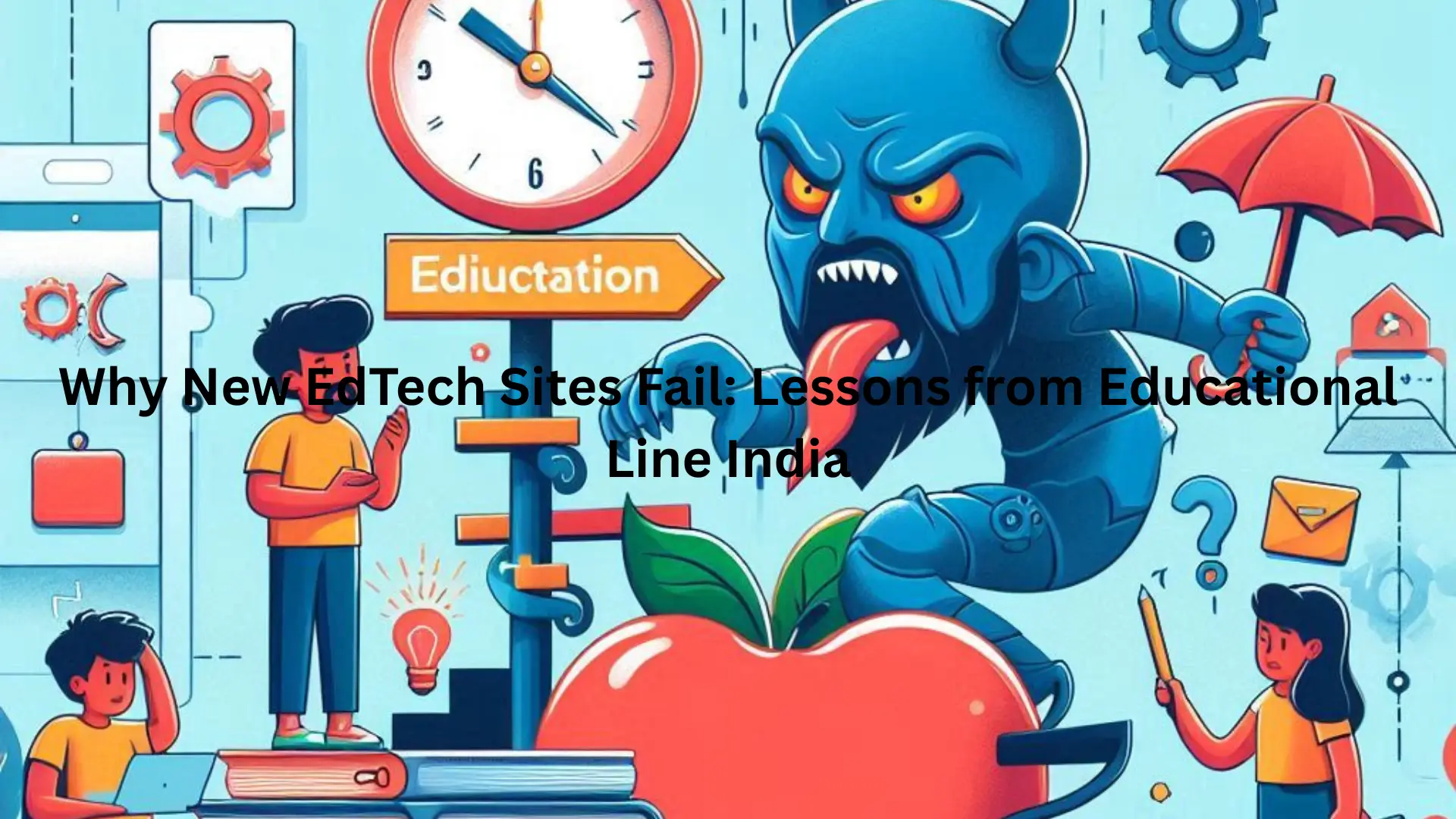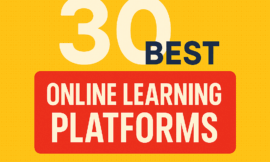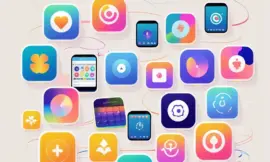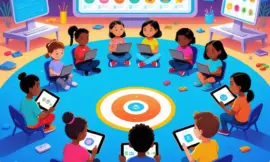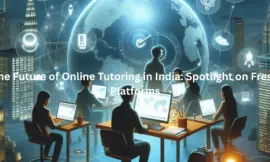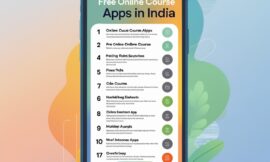Why New EdTech Sites Fail: Lessons from Educational Line India
In recent years, EdTech (Educational Technology) has become a booming sector in India. Startups and websites offering online courses, digital classrooms, skill development, and tutoring are popping up almost every month. Some become big names like Byju’s, Unacademy, Vedantu, while many others quietly shut down or stop growing.
One such lesser-known platform is Educational Line India. Though it started with promise, it couldn’t survive in the long race.
The Future of Online Tutoring in India: Spotlight on Fresh Platforms
This blog post explores:
Why many new EdTech websites fail
What went wrong with Educational Line India
What new startups can learn from these failures
Let’s dive in.
The Rise of EdTech in India
India has one of the largest young populations in the world. With over 250 million students, there’s a huge market for online education. COVID-19 further accelerated digital learning, with millions of students and teachers shifting online.
Big brands like Byju’s, Vedantu, and Unacademy gained massive funding and users. New EdTech platforms also tried to enter this space, hoping to grab even a small share.
But success isn’t guaranteed. For every successful EdTech company, there are dozens that fail.
Top 12 Latest Educational Topics
Why New EdTech Startups Fail
Here are the top reasons many EdTech sites fail to grow or survive:
1. No Clear Problem Solving
Many websites are launched without a clear idea of what problem they are solving. Education is not just about uploading videos or PDF notes.
❌ Wrong approach: “Let’s start a site with NCERT books and videos.”
✅ Right approach: “Let’s help rural students understand science better using simple language and local examples.”
2. Weak Content Quality
Parents and students expect value. If the videos are boring, notes are copied, or explanations are poor, users will leave.
3. No Real Differentiator
Why should a student visit your site instead of YouTube or already famous platforms?
If the website looks the same, gives the same content, and offers nothing new — users won’t stick around.
4. Poor Marketing and Reach
A great product needs visibility. Most small EdTech websites fail because they don’t know how to:
Run digital ads
Do SEO (Search Engine Optimization)
Use social media marketing
Build a strong user community
5. No Clear Business Model
Offering everything for free may look good at the start. But how will the business survive?
Without a clear monetization plan (ads, subscriptions, courses, etc.), the platform will run out of money.
6. Technical Glitches
Slow websites, app crashes, login problems — these make users frustrated. Technology must support learning, not become a barrier.
7. Lack of Feedback and Improvement
Listening to user feedback and improving regularly is key. If students say, “Your app hangs,” and you ignore it — you’re digging your own grave.
Top 20 Online Learning Platforms in India 2025
Case Study: Educational Line India
Let’s take a real example: EducationalLineIndia.com
This website was created to provide online study material for CBSE and State Board students. It claimed to offer:
NCERT solutions
Sample papers
Syllabus
Learning tips
Entrance exam guidance
Sounds useful, right? So why did it not grow?
Here’s what likely went wrong:
1. Lack of Unique Value
When we visited the website, most content was already available on bigger platforms. The explanations were generic, and many PDFs looked similar to what’s found on other sites. There was no strong reason for a student to stay.
2. Poor SEO and User Experience
Even if you search keywords like “CBSE class 10 maths sample paper,” Educational Line India rarely shows up on the first Google page.
The website also had slow loading speed and wasn’t fully mobile-friendly. In a country where most students use smartphones, this is a big issue.
3. Low Social Media Presence
Unlike other growing platforms that use Instagram Reels, YouTube Shorts, and Telegram groups, Educational Line India didn’t have strong online engagement. Students didn’t even know it existed.
4. No Student Interaction
There were no live classes, no student queries, and no teacher profiles. Students like to feel connected. A site that only gives PDFs or notes feels cold and mechanical.
5. Unclear Vision
There was no about us page with strong messaging, no blog, no updates. It looked more like a static content dumping ground than a dynamic learning platform.
In short, it started well but stopped evolving.
Top Scholarships for Indian Students in 2025: Complete Guide
Key Lessons for New EdTech Startups
If you’re planning to start an educational website or app, here are 10 things to keep in mind:
1. 🎯 Solve a Real Problem
Find a specific gap in education. Example:
Helping tribal students learn in their native language.
Offering affordable coaching for NEET in Tier 3 cities.
Teaching spoken English with local accents.
2. 🧠 Build Quality Content
Don’t just upload data. Create original, engaging, and interactive content. Use animations, stories, and real-life examples.
3. 📱 Focus on Mobile Experience
Ensure your app or site works smoothly on smartphones. 80% of students use phones.
4. 🔍 Learn SEO
Even great content is useless if no one sees it. Learn how to rank on Google. Use proper keywords, titles, and meta descriptions.
5. 📢 Use social media Creatively
Post short videos, quiz reels, and behind-the-scenes teaching. Build a community, not just an app.
6. 💬 Get Feedback
Talk to real students and parents. Improve based on what they say.
7. 🏷️ Build Your Brand
Choose a name, logo, and style that is memorable. Keep your message clear: What do you stand for?
8. 💸 Plan for Sustainability
Even if you start free, plan how you will earn later:
Offer premium content
Use donations
Get ad revenue
Run paid workshops
9. 👨🏫 Involve Real Teachers
Let experienced educators guide your content. Don’t rely only on AI or copied notes.
10. 🔄 Keep Innovating
Technology changes fast. Keep upgrading your platform, teaching styles, and tools.
How Indian Students Can Afford Higher Education Without Stress
Final Thoughts on Why New EdTech Sites Fail
Not every EdTech website will become the next Byju’s. But failure doesn’t mean the idea was bad. It just means the execution wasn’t right.
Educational Line India tried but couldn’t match expectations. That doesn’t mean others shouldn’t try — it means we all can learn from its mistakes.
Education is a noble field. But to make an impact, you need strategy, empathy, tech, and adaptability.
So, if you’re an aspiring EdTech founder, remember:
💡 Don’t just build a platform. Build a purpose.
Bonus Tip 📌
If you want your EdTech idea to grow, start with one small, focused niche — like:
Spoken English for rural girls
NCERT science explained in Hindi
Live Q&A support for class 12 Physics
Master that first. Then grow bigger. Slow and steady wins the race.
If you found this article helpful, do share it with others who dream of starting their own EdTech platform. Have more questions? Drop them in the comments — let’s learn together at KnowledgeHubForAll!
